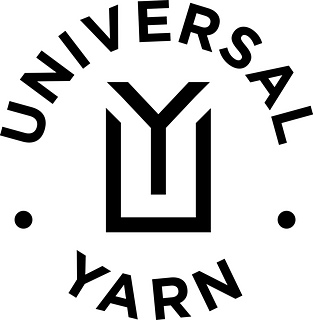patterns >  Universal Yarn Website
Universal Yarn Website
> Streamline Pullover






Streamline Pullover
The Streamline Pullover elevates your everyday wardrobe. Garter stitch details lined with eyelets decorate the shoulders, front, back, and sleeves, bringing the classic stockinette stitches to life. The relaxed silhouette features a curved, high-low hem, roomy sleeves, and a funnel neck. It all comes together in our luxe yarn, Fawning. This cozy blend of baby alpaca and merino wool is an irresistible choice for autumn and winter, and you’ll love knitting every stitch. You and your friends will be fawning over this delightful wardrobe staple!
SKILL
Knitting
DIFFICULTY
Intermediate
SIZES
Extra Small (Small, Medium, Large, 1X) (2X, 3X, 4X, 5X)
Shown in Small size with approx. 6” of positive ease.
FINISHED MEASUREMENTS
Bust: 36¼ (40, 43¾, 47¾, 52¼) (56, 59¾, 64½, 68¼)”
Back Length from Shoulder: 22¾ (23, 23¾, 24½, 25¼) (26¼, 27½, 28¼, 28¾)”
Front Length from Shoulder: 20½ (20¾, 21½, 22½, 23) (24, 25¼, 26, 26½)”
MATERIALS
Universal Yarn Fawning (70% baby alpaca, 30% extra fine merino wool; 50g/164 yds)
• 104 Sesame – 7 (8, 9, 10, 11) (12, 13, 14, 15) balls
Needles:
Needle A: US Size 7 (4.5 mm) 32-40” circular needle and set of DPNs (or your preferred needle for knitting small circumferences) or size needed to obtain gauge
Needle B: US Size 6 (4 mm) 16” and 32-40” circular and set of DPNs (or your preferred needle for knitting small circumferences)
Needle C: US Size 5 (3.75 mm) 16” circular
Notions: Tapestry needle, stitch markers (one unique marker to denote bor), stitch holders or waste yarn, removable stitch markers
GAUGE
21 sts x 30 rows/rnds = 4” in Stockinette stitch (St st) with Ndl A, after blocking
Save time, check your gauge.
PATTERN NOTES
This sweater is knit seamlessly from the top down. It begins with the back neck and stitches are increased to the fullest width, then worked evenly to the underarms where stitches are placed on hold. Then, stitches are picked up along the increased edge for the shoulders and worked flat, separately, to create the right and left fronts. Once the correct neck depth is achieved, the fronts are joined and worked even to the underarms. Then, the front and back are joined and worked in the round to the hem, which is shaped with short rows. Stitches for the sleeves are picked up from around the armhole and worked from the top down. Finally, stitches for the collar are picked up from around the neck and worked in the round.
Note: The left and right shoulder lines do not align with the top of the shoulder, but instead lay across the shoulder blade. You will pick up the left and right front stitches along the increasing edge of the back. The back increases do not contribute to the armhole depth, but the total length of the front does. The even lengths of the back and of the front are equivalent to the total armscye circumference. A schematic of the Front and Back is included to help you visualize the instructions.
122 projects
stashed
115 times
- First published: June 2024
- Page created: June 12, 2024
- Last updated: October 10, 2024 …
- visits in the last 24 hours
- visitors right now




